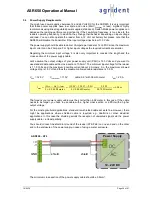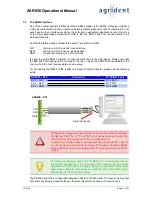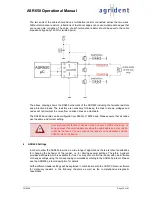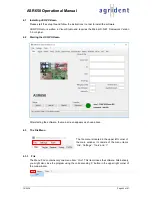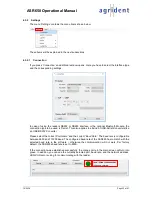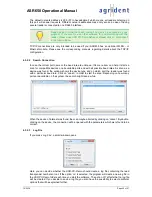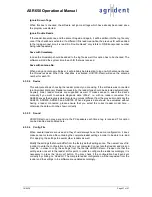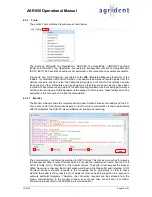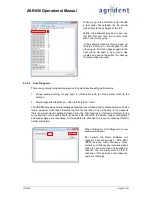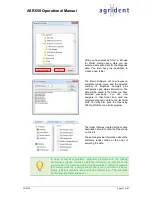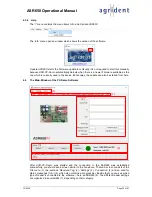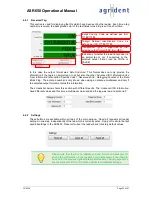
19/09/18
Page 30 of 67
ASR650 Operational Manual
When you open the Animal Counter file with
a text editor like notepad, the file should
look similar to the example on the left.
Within the particular groups you can see
the EID first and then the counter value
within the current group.
In this example there are three groups. An
ID listed in Group 1, cannot appear in this
group again. But it can appear again in the
next group because a new group was
created and hence the buffer for checking
for known tags was reset.
4.3.3.3
Auto Diagnosis
There are generally two possible reasons for a decreased reading performance:
1. Wrong antenna tuning, maybe even in combination with too much metal close to the
antenna.
2. Electromagnetic interference
– often referred to as ‘noise’.
The ASR650 provides powerful diagnosis features for evaluating both, antenna status and noise
levels. However, since these features might not be that easy to use
‘manually’ for non-experts,
there is a simple way for getting all these data
– the ‘
Auto Diagnosis
’. It stores a complete tuning
curve and the noise levels for both receivers, FDX and HDX. In addition, reader configuration
and reader status are requested. All these data are intended to be sent to technical staff for
further evaluation.
When clicking on ‘
Auto Diagnosis
’ a new
window will appear.
Per default, the Demo Software will
request 10 of each samples
– FDX, HDX
(RSSI) and the HDX frequency. Since
noise is not static usually, it always makes
sense to save more than one sample per
channel. You can press start in order to
continue or first increase or decrease the
number of samples.





